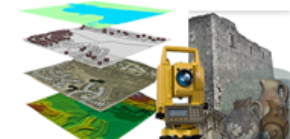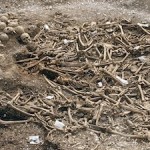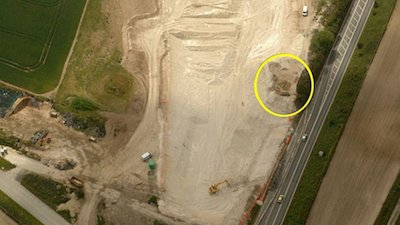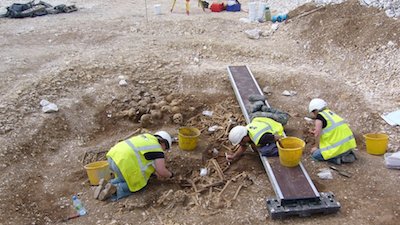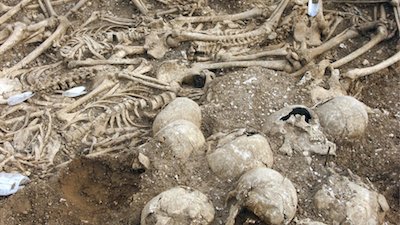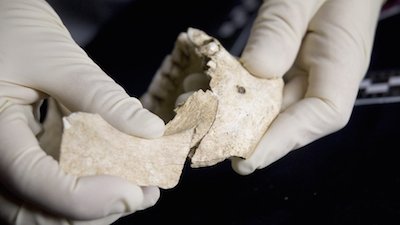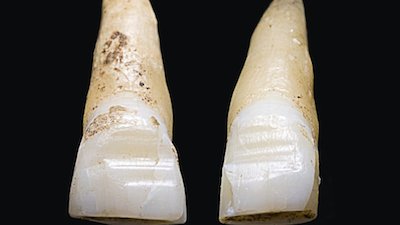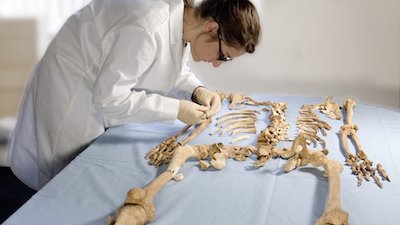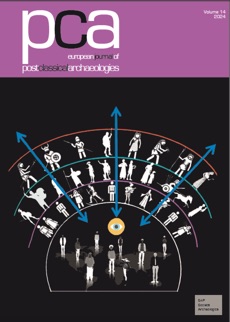About 50 skeletons were found in an old quarry pit at Ridgeway Hill, in Dorset, in 2009, during the construction of the Weymouth relief road.
All had been decapitated – their bodies were thrown into shallow graves with their heads piled up to one side.
Some of the skeletons have now gone on display at the British Museum in London. At the time, archaeologists from Oxford Archaeology said it was one of the “most exciting and disturbing” archaeological discoveries in Britain in recent years. Subsequent scientific analysis of the skeletons concluded that it was a mass grave of executed Vikings.
This picture shows how close the grave was found to the relief road.
The excavation combined traditional archaeological methods with “revolutionary” digital and three-dimensional recording to identify the exact position of each individual. The skeletons were removed and experts undertook forensic laboratory-based studies to find out what circumstances led to their dramatic and gruesome demise.
Oxford Archaeology said the results suggested the burial took place at the time of, or shortly after, the men’s execution which had probably been performed at the graveside. They estimated that between 47 and 52 individuals were present. The men may have been stripped of their clothes prior to burial, but were unbound.
Archaeologists said defence wounds on the hands, arms and skulls imply that not all men died without a struggle. Wounds to necks and shoulders indicate that the process of decapitation was no less chaotic, and in some cases several blows of the sword were required to remove the heads.
This picture slows a clean cut through the jaw of one of the skeletons.
Most of the men were found to be 18-25 years old. The youngest was in his early or mid teens, while the oldest was over 50. One had “deliberately filed teeth”, which Oxford Archaeology said may have been a symbol of status or occupation.
Chemical analysis of the teeth suggested that none of the men were from anywhere in Britain, but that they originated in the Arctic and sub-Arctic regions of Norway, Sweden, Iceland, the Baltic States, Belarus and Russia.
Oxford Archaeology project manager David Score said: “To find out that the young men executed were Vikings is a thrilling development. “Any mass grave is a relatively rare find, but to find one on this scale, from this period of history, is extremely unusual.”
Many of the individuals suffered from infections and physical impairment, and none showed convincing evidence for previous war wounds – hardly the picture of an elite group of Viking warriors.
The burial was radiocarbon dated to AD 970-1025, which places it in the reign of Aethelred the Unready or Cnut the Great. This was a time in England of Viking raids, war, hostages and retribution, but experts admit that ultimately questions of how the men came to be in Dorset remain open.
Experts said this picture shows sharp force peri-mortem trauma one some of the bones.
da bbc.com
